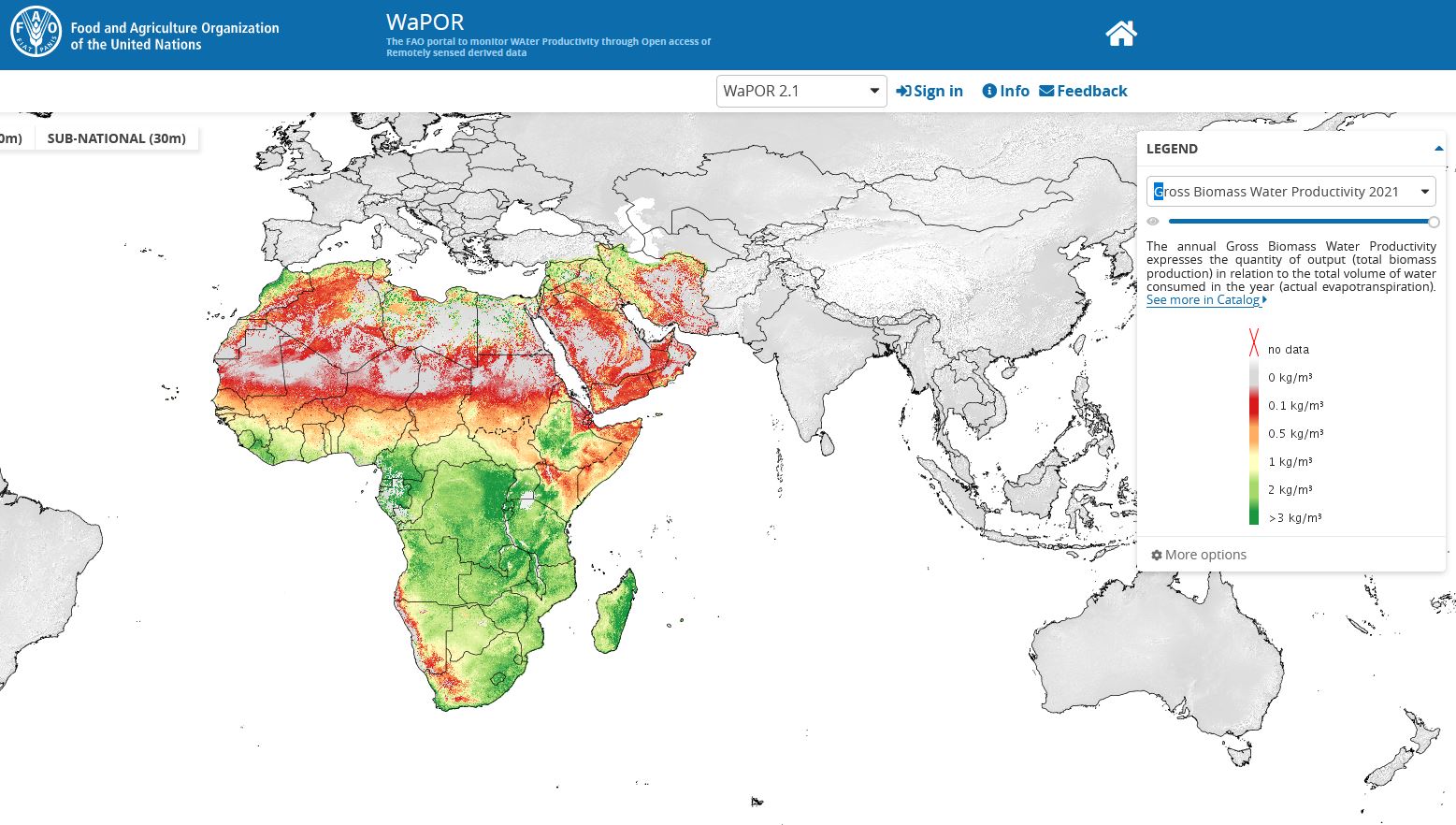
Vulnerability and impact assessment
The FAO Drought portal collates tools, methodologies, publications, and best practices, with the aim to support informed decision making and promote integrated drought management in agriculture. They are organized into three pillars: monitoring and early warning, vulnerability and risk assessment, response and mitigation.
Vulnerability and risk assessment helps to define priorities and develop actions to prevent drought risks and mitigate impacts, as well as to identify vulnerable locations. The goal of pillar 2 of integrated drought management, vulnerability and impact assessment is to determine the historical, current and likely future impacts associated with drought (impact assessment) and to assess the root causes of these impacts (vulnerability assessment).
FAO toolkit

Water Productivity Open-Access Portal (WAPOR)
WAPOR assists countries in monitoring water productivity, identifying water productivity gaps, proposing solutions to reduce these gaps and contributing to a sustainable increase of agricultural production.

Global Agro-Ecological Zones (GAEZ)
The GAEZ data portal is a wide and interactive web database which includes spatial natural resources indicators and results of agro-ecological crop analysis. It is designed to query, search, display, analyze and report on the state and trends of agricultural production and crop suitability under past, current and future climate.

Resilience Index Measurement and Analysis (RIMA)
RIMA is a quantitative approach that enables a rigorous analysis of how households cope with shocks and stressors, evaluating their resilience. Comparisons can be made between different types of households in a given country or area.

Self-evaluation and holistic assessment of climate resilience of farmers and pastoralists (SHARP)
SHARP supports projects in improving the resilience of farmers and herders as to safeguard their way of life, preserve their local indigenous knowledge and improve the livelihoods of their communities.

Global Livestock Environmental Assessment Model (GLEAM)
GLEAM is a modelling framework that quantifies production and use of natural resources in the livestock sector and identifies environmental impacts of livestock in order to contribute to the assessment of adaptation and mitigation scenarios to move towards a more sustainable livestock sector.
FAO projects from the field
Search by
| Title | Establishment of a Food Security Surveillance Unit and integrated support to spring seed distribution and water resources management to drought and war affected rural population |
|---|---|
| Project Code | OSRO/AFG/111/USA |
| Donor | United States of America |


